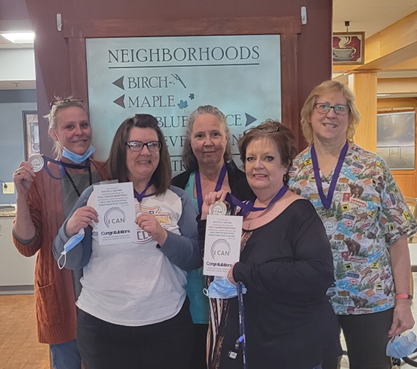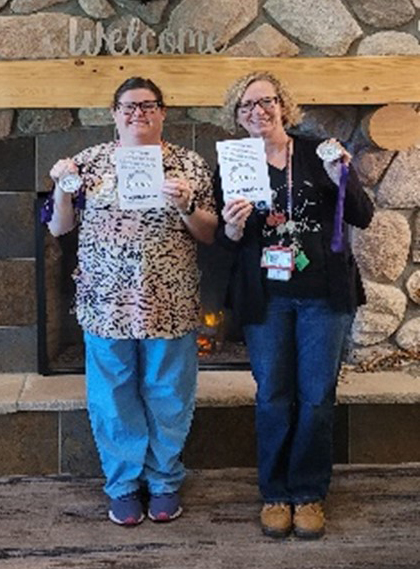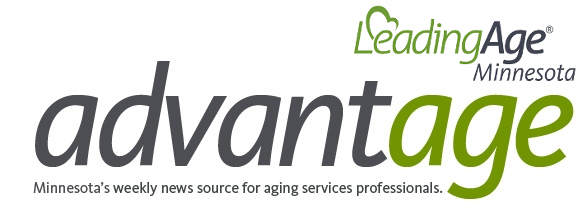Nov. 2, 2023
Featured News
DHS Releases Guidance on Spending Requirements for Increased EW Rates
On November 2, 2023 by Jeff Bostic
The Minnesota Department of Human Services (DHS) posted guidance on how Elderly Waiver (EW) providers should develop a distribution plan for the rate increase that starts Jan. 1, 2024.
The rate increase will be historic, as legislation advocated for by LeadingAge Minnesota and its Long-Term Care Imperative partner in the 2023 legislative session. Passed earlier this year, the changes will be a big step toward paying EW rates that cover the cost of providing services.
Rate increase details
The rate increase is projected at 44.8% for customized living and 28.6% for adult day services. The rate changes will be implemented starting Jan. 1, 2024, for all new EW clients and existing clients at their reassessment time.
Distribution plans
The legislation that included the rate increase requires that 80% of the “marginal increase in revenue” be spent on new wage and benefit increases. The recent guidance addresses what providers need to put into their plans and suggests a method for estimating an increase in revenue. Plans must be developed by Jan. 1, 2024, and posted for employees for six months.
The estimated increase in revenue is designed to take into account the rolling implementation of the increase throughout 2024. DHS suggests starting with 2023 EW revenue, applying the projected percent increases, and then calculating the amount to be received each month as more clients convert to the new rate. The guidance includes a detailed example of how to estimate increased EW revenue.
The funds in the distribution plan need to be spent on wage increases, including new positions, employer benefit cost increases, or new benefits. The guidance allows providers to use wage increases implemented since Jan. 1, 2023, toward meeting the legislative requirements, and it also allows operators of multiple sites to do a single plan covering the increase in EW funds at all sites.
New Resource: Find Grant Opportunities for Your Organization
On November 2, 2023 by Anna Mowry
Members can now access a comprehensive grid of over 25 grants, scholarships, loans, workforce development programs, and more funding opportunities for Minnesota senior care providers.
Find grants for your organization
We created a new resource – Grant Grid: Funding Opportunities for MN Senior Care Providers. To find the opportunities that best meet your organization’s needs, filter the grid by eligible providers, deadlines, topics, and more.
The Grant Grid includes:
- An overview of over 25 grants and other funding opportunities, both open now and coming soon
- Filters to sort the grid by eligible provider, deadline, topic and more
- Contacts and links for each opportunity to learn more and apply
This resource is updated routinely with new opportunities, so bookmark this resource and check back often! Stay tuned for LeadingAge Minnesota to share additional updates and communications about these programs in upcoming Advantage newsletters.
Want more funding info?
Earlier this year, we released Grant Programs, Loans, and other Opportunities for Minnesota Long-Term Care Providers, a resource detailing several opportunities from the most recent 2023 Minnesota legislative session. It’s another resource to ensure you’re taking advantage of the funding opportunities available to support your organization, your caregivers, and the seniors you serve.
Minimum Staffing Comment Letters Posted
On November 2, 2023 by Mark Schulz
Two new additions have been added to our CMS Staffing Standard webpage: LeadingAge Minnesota’s draft comments, which will be filed by the end of the week, and LeadingAge’s final comments, filed earlier this week.
Log into your account to read our draft comment letter and LeadingAge’s submitted letter.
Minimum staffing resource site
Within our CMS Staffing Standard page on our webpage, we have posted our comment letter draft. Last night, LeadingAge made their submitted comment letter available to members. We have included a copy on the same resource page for your review.
As a reminder, you have until Monday, Nov. 6 at 10:59 p.m. CT to submit your comments on the proposed rule. You may wish to submit your comments ahead of the deadline in case there is a rush by others to do so.
Still time to submit your comments
There is still time to submit your comment letter. Within our CMS Staffing Standard page on our website, there is a sample comment letter template for you to utilize to let CMS know how the proposed minimum staffing rule standards would impact your situation. Also located on the site are various supporting documents to make submitting your comments easy. They include:
- A how-to guide for filing comments
- Facility-level fiscal analysis showing how much will be needed for compliance
- Facility-level HPRD hardship exemption eligibility analysis
- Compilation of issues analyses from Advantage over the past several weeks
- A recorded Coaching Room event walking through the comment submission process
People who support and oppose the rule will submit comments, so sharing information about how the rule impacts your organization is critical. Older adults and their families deserve quality nursing home care: be sure CMS hears your thoughts!
Please reach out to Mark Schulz with any questions.
State News
Federal News
NLRB Issues Joint Employer Final Rule
On November 2, 2023 by Mark Schulz
On Oct. 26, the National Labor Relations Board (NLRB) released a final rule that will significantly broaden the standard for determining whether separate entities are “joint employers” of particular employees within the meaning of the National Labor Relations Act.
The NLRB did not significantly change its final rule compared to its earlier proposed version. The final rule will be effective on Dec. 26.
Rule changes
The final rule will change the standard for when two employers who do business together are considered joint employers and are, thus, liable for one another's unfair labor practices under the National Labor Relations Act (NLRA) and be required to bargain for such joint subjects.
Under the new standard, an entity may be considered a joint employer of a group of employees if each entity has an employment relationship with the employees and they share or codetermine one or more of the employee’s essential terms and conditions of employment, which are defined exclusively as:
- Wages, benefits, and other compensation;
- Hours of work and scheduling;
- The assignment of duties to be performed;
- The supervision of the performance of duties;
- Work rules and directions governing the manner, means, and methods of the performance of duties and the grounds for discipline;
- The tenure of employment, including hiring and discharge; and
- Working conditions related to the safety and health of employees.
The rule represents a significant expansion of joint-employer status by using either the authority to control conditions of employment or exercising the power to indirectly control conditions of employment as sufficient to establish joint-employer status. This means that either indirect or reserved control may serve as the basis for determining a joint employer relationship, and the existence of either, without regard to the extent of the reserved or indirect control, indicates joint employer status.
The NLRB states the analysis for determining a joint employer relationship will remain a fact-specific analysis conducted on a case-by-case basis.
Implications
With the final rule known, impact analyses should start, or previously identified actions needed to comply with the rule should occur. Contracts that could be deemed to give an employer direct or indirect authority over another entity's employees should be reviewed, and many of these contracts will likely need to be amended. For example, situations in which an employer could be deemed a joint employer of another entity's employees likely include:
- Temporary staffing contracts
- Contracts for therapy, food service, and maintenance agreements
- Shared service agreements with hospitals or other providers sharing a facility's campus
It should also be noted that common arrangements involving affiliated entities in the health care systems may also implicate joint employment status under the final rule.
Other activities that may assist in complying with the new rule include:
- Training your managers to ensure they understand the implications of the new rule and are clear about the legal boundaries surrounding both direct and indirect control.
- Reviewing or creating clear policies regarding the role and authority of third-party vendors with respect to your business practices, especially in their interactions with direct employees.
Collective bargaining
There is no doubt this new rule will result in increased union organizing and collective bargaining efforts. You can expect unions to return to traditional organizing tactics targeting temporary employees with promises of “regular” status and all the perceived perks that come with it to secure their signatures and their votes. This could allow unions to gain a toehold that may ultimately extend to organizing your direct employees.
For more information
NLRB’s Fact Sheet on the final rule is a good summary and specific issue document.
You can review the final rule here.
Please reach out to Mark Schulz with any questions.
Notable News
Wound Care and Walking Rounds Quality Improved Projects Rank Top in ICan Contest
On November 2, 2023 by Julie Apold
Two Silver Bay Veterans Home teams ranked second and third in LeadingAge Minnesota’s 2023 ICan Quality Improve Contest.
Several member organizations were recently recognized for their commitment to quality as part of the first annual ICan Quality Improvement Contest.
About the ICan Quality Improvement Contest
The ICan Quality Improvement Contest is a new program within LeadingAge Minnesota’s quality program created to provide quality improvement tools and strategies for staff to think about opportunities for improvement in a solution-focused way. Staff help lead the improvement projects that are implemented over several months.
ICan teams presented their completed projects, judged by a three-member panel.
Wound Care Supply Standardization Project
Ranking second in the contest, the “Wound Care Supply Standardization” team focused on an identified issue of staff having difficulty finding wound care supplies when needed, resulting in wasted supplies and staff time. The wound care supplies were cleaned from the four med rooms separately and reorganized with staff setting par levels to maintain consistency.
Staff satisfaction surveys indicated that floor staff liked the new process, and the project achieved a significant cost savings of approximately $6000 for just one type of wound dressing. The staff-led project also resulted in staff validation, inclusion, and improved staff morale.
Find additional details of their project and lessons learned here here.

Wound Care Supply Standardization Team Members: Lollie Cooper, LPN; Dawn Midbrod, LPN; Lu Tedrick, RN Sr./WCC; Kim Osmundson, RNS/WCC; Brenda Hagen, RNS. Not pictured: Rennae Houle-Burns, DON; Kathryn Rosha, ADON; Tina Lundberg, CSAS; Jennifer Fisher, RN Sr.
Walking Rounds Project
The “Walking Rounds” team project took third place in the contest for their communication improvement project, which led to clearer communication between care partners about resident-centered care.
Human Service Technicians (HSTs) now receive reports at the beginning of the shift, then walk to focused residents with the HST partner from the previous shift to monitor quality measures established by their project.
The team has tracked performance and has seen increased communication between HST care partners, above-standard resident care, decreased shift-to-shift incomplete tasks, and better communication with other nursing staff.
Find additional details of their project and lessons learned here.

Walking Rounds Team members: Jennifer Fisher, RN, Sr. and Natasha Hollaway, HST/TMA/VCS. Not pictured: Alisha Harkness HST/TMA/ VCS
Watch for information in early 2024, or contact Julie Apold, Vice President of Quality & Performance Excellence, to learn how you can get a team involved in the 2024 ICan Quality Improvement Contest.
ICYMI: Participate in LeadingAge Minnesota Committees in 2024
On November 2, 2023 by Lori Meyer
We are actively recruiting members to participate in LeadingAge Minnesota committees in the coming year if you missed it.
We are tackling your challenges on numerous fronts, and we need you to help shape the critical work ahead to:
- Push for adequate, timely, and sustainable funding
- Reform the regulatory system to be fair, consistent, and collaborative
- Address issues with the assisted living licensure requirements
- Recruiting and retaining a skilled workforce against the backdrop of mandatory staffing levels
These are just a few impactful issues facing senior care in the coming year. Through it all, we have a tremendous opportunity to improve the aging experience for those we serve.
Ready to get involved?
All committee rosters will be refreshed for 2024, so whether you have been involved in committees this year, you must sign up to participate in 2024. To learn more about each committee’s focus and sign up, click here.
Making your selections by Monday, Nov. 27, 2023, will ensure you receive timely committee information and meeting schedules for the coming year.
Thank you for being part of our collective efforts. We are excited to work alongside you in the coming year.
Member News
Lores Consulting and Senior Care Solutions Launch New Partnership
On November 2, 2023 by Libbie Chapuran
Lores Vlaminck, nurse consultant and owner of Lores Consulting, and Michelle Stober, the owner of Senior Care Solutions (SCS) since 2015, are thrilled to share the exciting news of a new collaborative partnership.
Lores, a highly respected consultant and educator, brings over 47 years of invaluable experience in assisted living, home care, and hospice services to this partnership. As she embarks on a well-deserved retirement strategy, Lores stated, “My wonderful husband, who retired five years ago, has been patiently waiting for this time to come. It is quite a unique position to adore your work, be profoundly passionate about it, and grapple with the idea of transitioning into a life without work—well, somewhat less."
While Lores will continue to oversee several ongoing projects and engage in the educational work she is passionate about, she eagerly anticipates the new chapter ahead.
Senior Care Solutions has hired Lisa Diez as director of home care and hospice consulting services and is excited to launch consulting, interim, and supplemental services to both home care and hospice agencies in addition to its current services to skilled care and assisted living clientele.
Lores will continue with education and plans to transition her clients to Senior Care Solutions over the next year. To reach Lores, contact 507-358-4301 or Lores@Loresconsulting.com. To reach Senior Care Solutions, please get in touch with consult@srcaresolutions.net or 651-955-7175.
District Officers Elected at October Member Meetings
On November 2, 2023 by Barbara Landeen
Members elected new officers to represent them during the recent October District Meetings, and several officers moved to new roles as terms are set to expire.
Congratulations to the newly elected officers
In District B (northwest):
- Shane Roche, Administrator, Guardian Angels Health & Rehabilitation in Hibbing, District B Director to the LeadingAge Minnesota Board of Directors
- Dani Donner, Administrator, Minnesota Veterans Home Silver Bay, Chair-Elect
In District G (metro):
- Briana Sturm, Vice President of Operations, Benedictine, District Chair
- Jeffrey Richardson, Executive Director, Anoka Rehabilitation and Living Center, Chair-Elect
In District E (southwest):
Jason Anderson, Director of Long-Term Care Services, Sanford Canby Sylvan Court, was elected to a second term as District Director to the LeadingAge Minnesota Board of Directors.
Click to view a complete list of District Officers and Directors.
